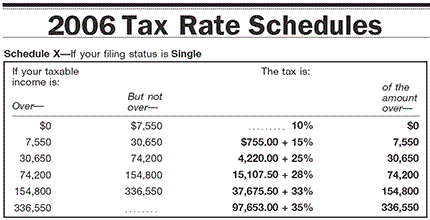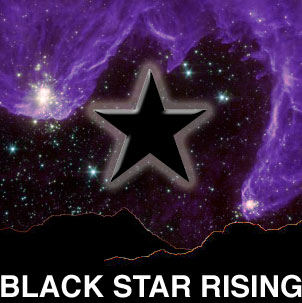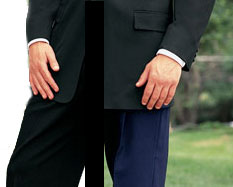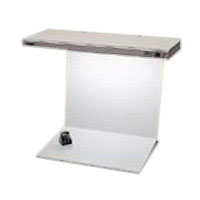Taxes, Taxes, Taxes (Federal, State, and Self-Employment)
Today is April Fool's Day, but it's also exactly 16 days from when you either must file your taxes, or obtain an extension, and joking around with your tax obligations can get you in hot water.
It's a sad fact that most people don't recognize -- the government, in one form or another, takes about 50% of your profits. I'd love to see the day taxes are due as the week before election day each year, but alas, our elected officials have put it as far away from that date as possible.
Just how does our taxes add up to 50%? Well, if you only earned a profit of $20k, your taxes as a single person are $2,600, or about 13%, at $50k, your taxes are $9,000, or about 18%. 
The above tax table for 2006 shows the range from 10% to 35% for your federal obligation only. Since the disbelievers of the 50% total tax liability tend to be young, and single, I am showing just this tax table, but the entire schedule can be seen 2006 Tax Rate Schedules (http://www.irs.gov/pub/irs-pdf/i1040tt.pdf?portlet=3) on page 84 shows the summary for the various filing statuses.
You can't survive long with just a $30k taxable income (i.e. that's what's left over for you once you have paid all your expenses) but even at that figure, your federal taxes are 25%, at $62,000 you pop up to a 28% tax.
State taxes - beware! It's not just the various state income taxes (http://www.retirementliving.com/RLtaxes.html) that will cost you. Many states with seemingly low income tax rates more than exceed other states with personal property taxes. Virginia, for example has a range for income taxes of a low of 2% to a high of 5.75%. Since the 5.75% rate applies at a taxable income total of just 17%, allmost all tax payers who are photographers will be at this rate (actual taxes are $720 + 5.75% of the amount over $17k). Yet, Virginia, like many other jurisdictions charges personal property taxes. For example, living in Fairfax County, in Northern Virginia near Washington DC, both personal property and business personal property is taxed (http://www.fairfaxcounty.gov/dta/tax_rates.html) - per year - at $4.57 per $100, or 4.57%, so each year you pay 5.75% + 4.57% based upon the value of your cameras and computers and vehicles, and such. In other words, you're paying more than 7% to be sure. So, with that in mind, let's add that arbitrarily (but reasonably arbitrarily) arrived to 7% with the 28% federal, and you're now at 35%.
What then, is the next 15%? Well, if you're familiar with your cryptic friend FICA, from your days getting a semi-steady check from your desk job where FICA kept taking money from you for no apparently reasonable reason, then you're familiar with Social Security, also known as Self-employment tax, for those of us who are, well, self-employed. They are the same thing, just different names. And, in the case of FICA, you only pay 7.5%, and your employer is responsible for the remaining 7.5%. When filing as self-employed, you are responsible for the entire 15%. Here's a nice descriptive page - (http://www.irs.gov/businesses/small/article/0,,id=98846,00.html) Self-Employment Tax. According to the site "SE tax rate. The self-employment tax rate is 15.3%. The rate consists of two parts: 12.4% for social security (old-age, survivors, and disability insurance) and 2.9% for Medicare (hospital insurance)."
See? 35% + 15% equals 50%, sadly, it's that simple. So, be sure to save every receipt that is business related. For every $100 business expense you have a receipt for, you are reducing your taxable income by $100, and thus, preventing you from having to pay $50 out of your pocket. In other words, for every $1 as a valid business expense, you save $0.50.
Of course, I am not an accountant, so take this as just an eye-opener and an inspiration to seek professional tax advice from someone who is actually licensed to do so -- I am not!
Please post your comments by clicking the link below. If you've got questions, please pose them in our Photo Business Forum Flickr Group Discussion Threads.
 The other day, one of you readers posited this:
The other day, one of you readers posited this: I've just posted over at my agency's blog - Black Star Rising, an article on the Value of Post-Production, a little insight into what I charge, and so on, as promised in an earlier post this week
I've just posted over at my agency's blog - Black Star Rising, an article on the Value of Post-Production, a little insight into what I charge, and so on, as promised in an earlier post this week  Why must we stand by and somehow accept what other photographers are doing to the detriment of our profession? Why must we simply sit back and say "heck, go ahead and do RF!", or "wow! You just took an assignment for $75, using $250 worth of equipment if you had to rent it all. You go girl!", or "wahoo! You just got a photo credit for your work! Congrats! It looks great next to the full page ad that the advertiser paid $50k for! That's awesome!"
Why must we stand by and somehow accept what other photographers are doing to the detriment of our profession? Why must we simply sit back and say "heck, go ahead and do RF!", or "wow! You just took an assignment for $75, using $250 worth of equipment if you had to rent it all. You go girl!", or "wahoo! You just got a photo credit for your work! Congrats! It looks great next to the full page ad that the advertiser paid $50k for! That's awesome!" No, sorry. For men, this one's easy to illustrate - have you ever pulled out the black suit, and black pants, checked to make sure they matched outside your closet, and then once you're outdoors, your wife points out that they don't match? For women, it happens with dresses, but somehow, not so often.
No, sorry. For men, this one's easy to illustrate - have you ever pulled out the black suit, and black pants, checked to make sure they matched outside your closet, and then once you're outdoors, your wife points out that they don't match? For women, it happens with dresses, but somehow, not so often. One resource is a light hood. The folks over at
One resource is a light hood. The folks over at 